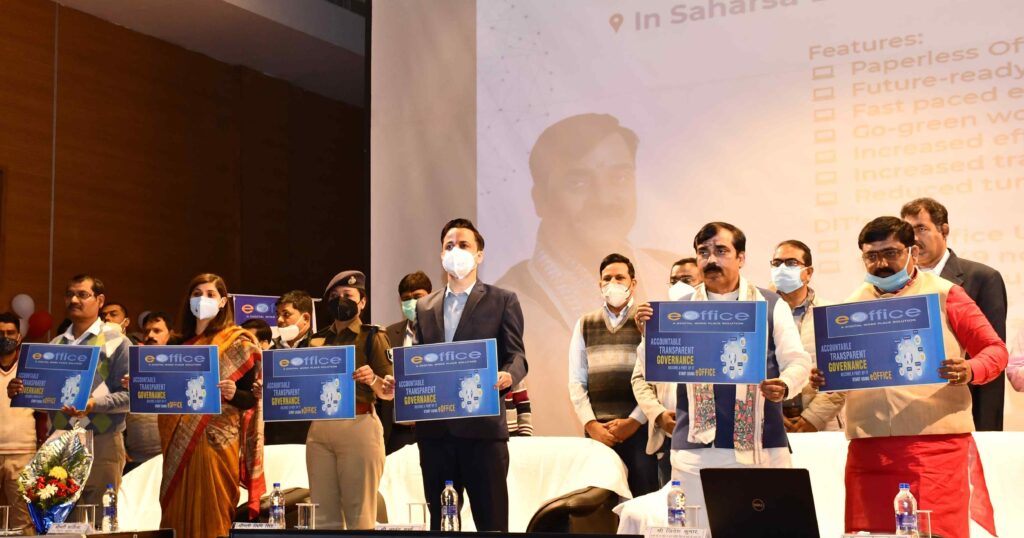First paperless district in Bihar: Saharsa shows the way!
Author: Pragya Lal

Saharsa: Take a pause and look around! At this point of time can we imagine our lives without the use of paper? For storing information, printing books, newspapers, magazines and what not where the paper is not used.
Each year, more than two billion books, 350 million magazines, and 24 billion newspapers are published. Although paper is never blamed for climatic changes or global warming, paper impacts the globe at every stage in its lifecycle.
However, there are some visionaries in our bureaucracy who refuse to be a part of standard practices and show the way. Anand Sharma, IAS, is one such name who has made Saharsa district in Bihar the first paperless district.
Currently posted as the District Magistrate of Saharsa, he has made the DM office completely paperless barring the age-old practices of heavy paper folders of grievances and pile up of dusty files. Now, the complaints reach the DM’s office not as a document file, but through online mode. What took three weeks of waiting time is now down to one day!
“It was not a one-day magic event. The process takes time, training, brainstorming, and changing mindsets and behaviours. It was not an easy task to overhaul the system that has been in place for decades. All the office staff were used to it,” said 2013-batch IAS officer Sharma.
The environment friendly initiative has not only expedited the process of disposal of the files but maintains the transparency of the process as well.
The initiative of Sharma assumes significance in view of the fact that paper is the third or fourth largest source of industrial greenhouse gas emissions in most developed countries. More than 20 million trees are consumed for printing books, and about 95 million trees are consumed for newspapers, every year.
Further, paper makes up 26 per cent of landfills. Degradation produces Methane, a greenhouse gas with 23 times the heat trapping capacity of carbon dioxide. Landfills are the source of major release of Methane. /BI/



